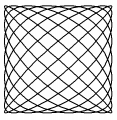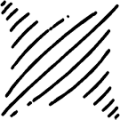Difference between revisions of "Christoph Champ Logo"
(Started article) |
(more info.) |
||
| Line 1: | Line 1: | ||
| − | In case you are wondering what this site's logo (or '''Christoph Champ Logo''') is all about, this article will attempt to explain it. | + | In case you are wondering what this site's logo (or '''Christoph Champ Logo''' / '''''Sumi-e'' Lissajous curve''') is all about, this article will attempt to explain it. |
I have always been interested in geometry. This is especially true of symmetry. This is what I had in mind when I designed my logo for this site. It is actually just a Lissajous curve that has been transformed, using the principles of ''sumi-e'', for an artistic effect. | I have always been interested in geometry. This is especially true of symmetry. This is what I had in mind when I designed my logo for this site. It is actually just a Lissajous curve that has been transformed, using the principles of ''sumi-e'', for an artistic effect. | ||
Revision as of 14:28, 11 February 2006
In case you are wondering what this site's logo (or Christoph Champ Logo / Sumi-e Lissajous curve) is all about, this article will attempt to explain it.
I have always been interested in geometry. This is especially true of symmetry. This is what I had in mind when I designed my logo for this site. It is actually just a Lissajous curve that has been transformed, using the principles of sumi-e, for an artistic effect.
The mathematics behind the logo
In mathematics, a Lissajous curve is the graph of the system of parametric equations
- x = A*sin(at + δ), y = B*sin(bt),
Below is an example of a Lissajous figure with δ = π/2, a = 9, b = 8. Next to it is a sumi-e rendition of this same Lissajous curve (created by Christoph Champ).
You can easily generate a Lissajous curve in Maple by executing the following commands:
x1:= t->sin(9*t): y1:= t->sin(8*t):
plot({[x1(t), y1(t), t=0..2*Pi]});

